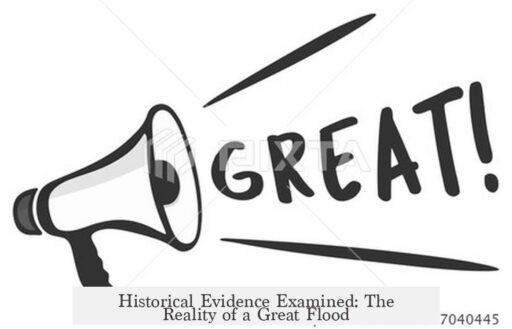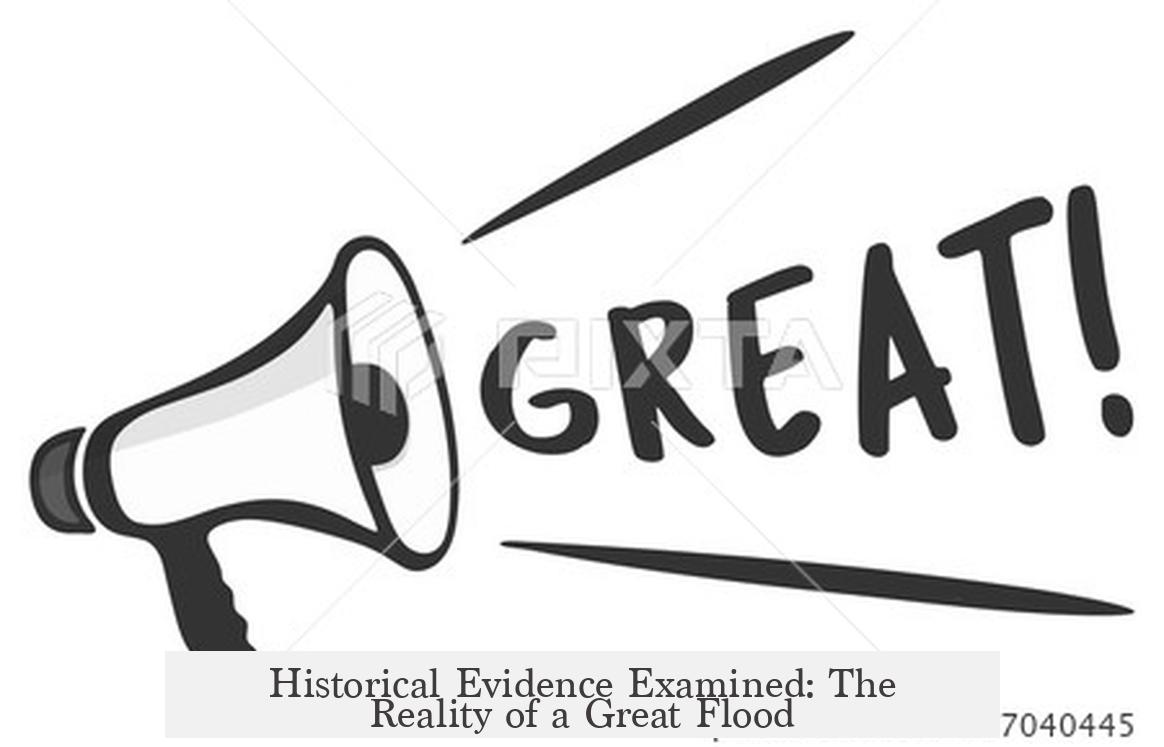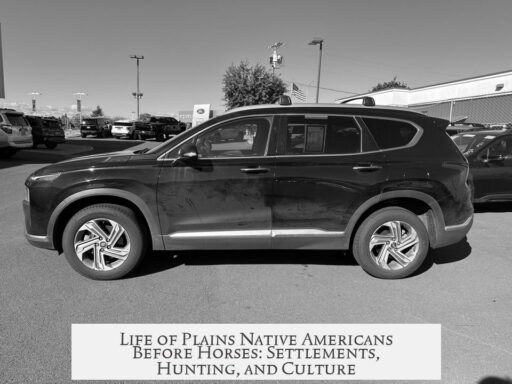There is no solid historical evidence for a global great flood. However, significant geological and archaeological findings support the occurrence of major regional floods that could have inspired such myths. Ancient cultures often passed stories orally, with many featuring localized devastating floods. Some of these events were so massive they may have influenced legends like the biblical flood and the Epic of Gilgamesh.
A well-known scientific hypothesis about a large ancient flood is the Black Sea Deluge Hypothesis. It proposes that around 7,600 years ago, rising sea levels at the end of the last Ice Age caused the Mediterranean to burst through a natural dam and flood into the freshwater Black Sea basin. This drastically raised the Black Sea’s level, flooding large areas of land.
- This event was not global but would have appeared catastrophic to regional inhabitants.
- Evidence includes submerged ancient shorelines nearly 400 feet below current water level.
- The flood might have been remarkable enough to be retold over generations, developing into the flood myths known in ancient texts.
Aside from localized flood events, geological features once interpreted as flood evidence have been re-examined. For example, large rocks called glacial erratics were once thought to be transported by massive floodwaters. 19th-century scientist Charles Lyell clarified these blocks were carried by glaciers during the Ice Age, not floodwaters.
An eyewitness account from 1815 captures this shift in understanding. A guide in the Alps argued that glaciers, not floods, moved enormous granite blocks. His reasoning, based on direct observation, challenged the scientific consensus influenced by biblical flood interpretations.
Such observations highlight how natural geological processes were sometimes misattributed to biblical floods before the rise of modern geology. The understanding evolved through careful study of glacier movements and sediment patterns rather than oral flood traditions.
Scientific consensus agrees there is no evidence supporting a global flood covering the entire Earth. Instead, many significant floods occurred locally or regionally:
| Major Flood Event | Description | Significance |
|---|---|---|
| Black Sea Deluge (~7,600 years ago) | Mediterranean breach flooded the Black Sea basin | Potential origin of flood myths in the Near East |
| Missoula Floods | Catastrophic glacial outburst floods in North America | Sculpted large portions of the Pacific Northwest landscape |
| Outburst flood forming the English Channel | Floods that separated Britain from continental Europe | Major geological transformation |
The USGS paper on large historical floods provides detailed analyses of these types of events. Additional detailed discussions appear in scientific literature on the Missoula Floods and outburst floods. These sources confirm that enormous, localized floods reshaped landscapes but did not engulf the whole globe.
Oral traditions likely preserved memories of these dramatic regional floods and passed down stories shaped by cultural and religious contexts. Over millennia, such accounts may have evolved into grand narratives of global floods. However, this does not equate to geological or paleontological evidence for a worldwide flood event.
- Many floods occurred at the end of the Ice Age due to glacial melt and ice dam failures.
- Archaeological discoveries and sediment analysis show flood effects limited to specific locations.
- Geological features initially interpreted as flood artifacts often have alternative natural explanations.
- Myths may arise from memory of these devastating local floods amplified by cultural storytelling.
In conclusion, historical evidence points to impressive regional flood events. These floods could explain many flood myths but do not support the notion of a singular global deluge. Modern geology, paleoenvironmental data, and hydrological studies present a nuanced understanding of Earth’s flood history.
- No evidence supports a global flood covering the entire planet.
- Major regional floods like the Black Sea Deluge and Missoula Floods shaped cultures and landscapes.
- Geological findings clarify the causes of erratics and flood-related land features.
- Flood myths are likely cultural interpretations of local events passed through oral history.
Is there solid evidence supporting a great flood like the one described in ancient myths?
There is no evidence for a global flood as described in myths. However, local massive floods, like the Black Sea deluge, have strong geological support and may have inspired ancient flood stories.
What is the Black Sea Deluge Hypothesis and how does it relate to flood legends?
This hypothesis suggests a sudden flooding event occurred when rising seas broke into the Black Sea basin post-Ice Age. It was likely dramatic to witnesses and could have inspired later myths about a great flood.
How did scientists disprove the idea that giant rocks were moved by a biblical flood?
In the 1800s, glacial erratics were thought to be flood remnants. Charles Lyell showed in 1830 that glaciers, not floods, transported these rocks during the Ice Age, changing how we understand Earth’s history.
Could ancient oral traditions have preserved memories of real flooding events?
Flood myths likely stem from oral histories of real but localized floods passed down over generations. These stories may have grown more elaborate, eventually forming the basis for flood legends.
Are there examples of well-studied large ancient floods besides the Black Sea event?
Yes, events like the Missoula floods and other massive outburst floods have been extensively studied and documented by scientists, showing large-scale flooding was common during ice age transitions.




